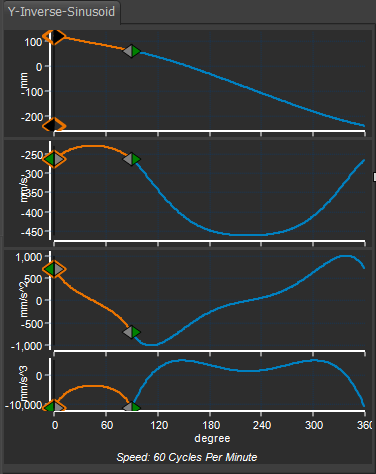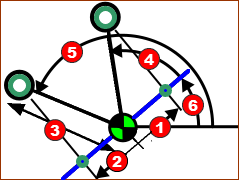Y–Inverse-Sinusoid
Note: The Y-Inverse-Sinusoid motion-law is usually applied to a rotating part, e.g. a Crank. There can be only one Y-Inverse-Sinusoid segment in each motion.
See also : Constant Crank Velocity
Motion-Description
Motion-ValuesYou CAN control the:
You CANNOT control the:
Segment Parameters
Segment-Range
|
||||||||||
Video: Y-Inverse-Sinusoid Example |
||||||||||
 Y-Inverse Sinusoid |
||||||||||
Example: with two segments. Crank rotates in a Counter-Clockwise direction Constant-Velocity Starts at 50mm to Left of Crank-Center (angle 120º) Constant-Velocity Ends at 50 to Right of Crank-Center (angle 60º) Segment 1: •X-axis Start = 0 ; End = 90º The Y–Inverse Sinusoid Segment-Parameters are: •Radius of Rocker = 100mm, Start Position = -50, End Position = 50mm. With these Segment-Parameters: •The Y–axis is 120º†, when the Master Machine Angle (MMA) is 0º . •The Y–axis is 60º, when the Master Machine Angle is 90º . Segment 2: •X-axis Start = 90º, End = 360º (0º) A Flexible-Polynomial •The Y–axis is 60º, when the Master Machine Angle is 90º (= end of Segment 1) •The Y–axis –240º when the Master Machine Angle is 360º . Thus the Crank makes a full rotation from +120 to -240 in a counter-clockwise direction. |
||||||||||

